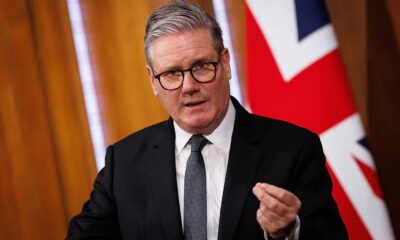Top Stories
Trump Administration Imposes 25% Tariff on New Zealand Goods

The Trump administration has announced a significant trade policy shift, implementing a 25% tariff on goods imported from New Zealand. This decision, effective as of August 3, 2025, marks a substantial escalation in ongoing trade tensions between the United States and its international partners.
This tariff affects a wide range of products, aiming to protect American industries from what the administration describes as unfair competition. The decision has drawn criticism from various sectors, particularly those reliant on imports from New Zealand, which has long been viewed as a key trading partner.
Impact on Trade Relations
The introduction of the tariff could have lasting implications for trade relations between the United States and New Zealand. Officials in Wellington have expressed concerns, stating that such measures could hinder trade growth and disrupt established supply chains. According to New Zealand’s Minister of Trade, Damien O’Connor, the tariff might lead to increased costs for consumers in the U.S. and could potentially retaliate against American goods in the New Zealand market.
In response, various industry leaders in New Zealand have begun to assess the potential financial impact. The New Zealand Chamber of Commerce has indicated that the tariff could lead to a reduction in trade volume, ultimately affecting economic growth.
Historical Context
This latest move is part of a broader trend in trade policy under the Trump administration, which has favored protective measures in various sectors. In previous years, tariffs have been imposed on multiple countries, often leading to retaliatory actions that escalate trade disputes. The administration argues that these measures are necessary to safeguard American jobs and industries from foreign competition.
The long-term consequences of this tariff remain to be seen. Analysts suggest that if the trend continues, it may force New Zealand to seek alternative markets or adjust its trade strategies to mitigate the financial impact. As both nations navigate this new trade landscape, the situation will likely evolve, affecting not only bilateral relations but also the global trade environment.
As the economic landscape shifts, stakeholders on both sides will be closely monitoring developments. The potential for further tariffs or trade negotiations looms large, creating an atmosphere of uncertainty for businesses engaged in trans-Pacific trade.
-

 World3 months ago
World3 months agoTest Your Knowledge: Take the Herald’s Afternoon Quiz Today
-

 Sports3 months ago
Sports3 months agoPM Faces Backlash from Fans During Netball Trophy Ceremony
-

 Lifestyle3 months ago
Lifestyle3 months agoDunedin Designers Win Top Award at Hokonui Fashion Event
-

 Sports3 months ago
Sports3 months agoLiam Lawson Launches New Era for Racing Bulls with Strong Start
-

 Lifestyle3 months ago
Lifestyle3 months agoDisney Fan Reveals Dress Code Tips for Park Visitors
-

 Health3 months ago
Health3 months agoWalking Faster Offers Major Health Benefits for Older Adults
-

 World3 months ago
World3 months agoCoalition Forms to Preserve Māori Wards in Hawke’s Bay
-

 Politics3 months ago
Politics3 months agoScots Rally with Humor and Music to Protest Trump’s Visit
-

 Top Stories3 months ago
Top Stories3 months agoUK and India Finalize Trade Deal to Boost Economic Ties
-

 Entertainment3 months ago
Entertainment3 months agoExperience the Excitement of ‘Chief of War’ in Oʻahu
-

 World3 months ago
World3 months agoHuntly Begins Water Pipe Flushing to Resolve Brown Water Issue
-

 Science3 months ago
Science3 months agoNew Interactive Map Reveals Wairarapa Valley’s Geological Secrets









